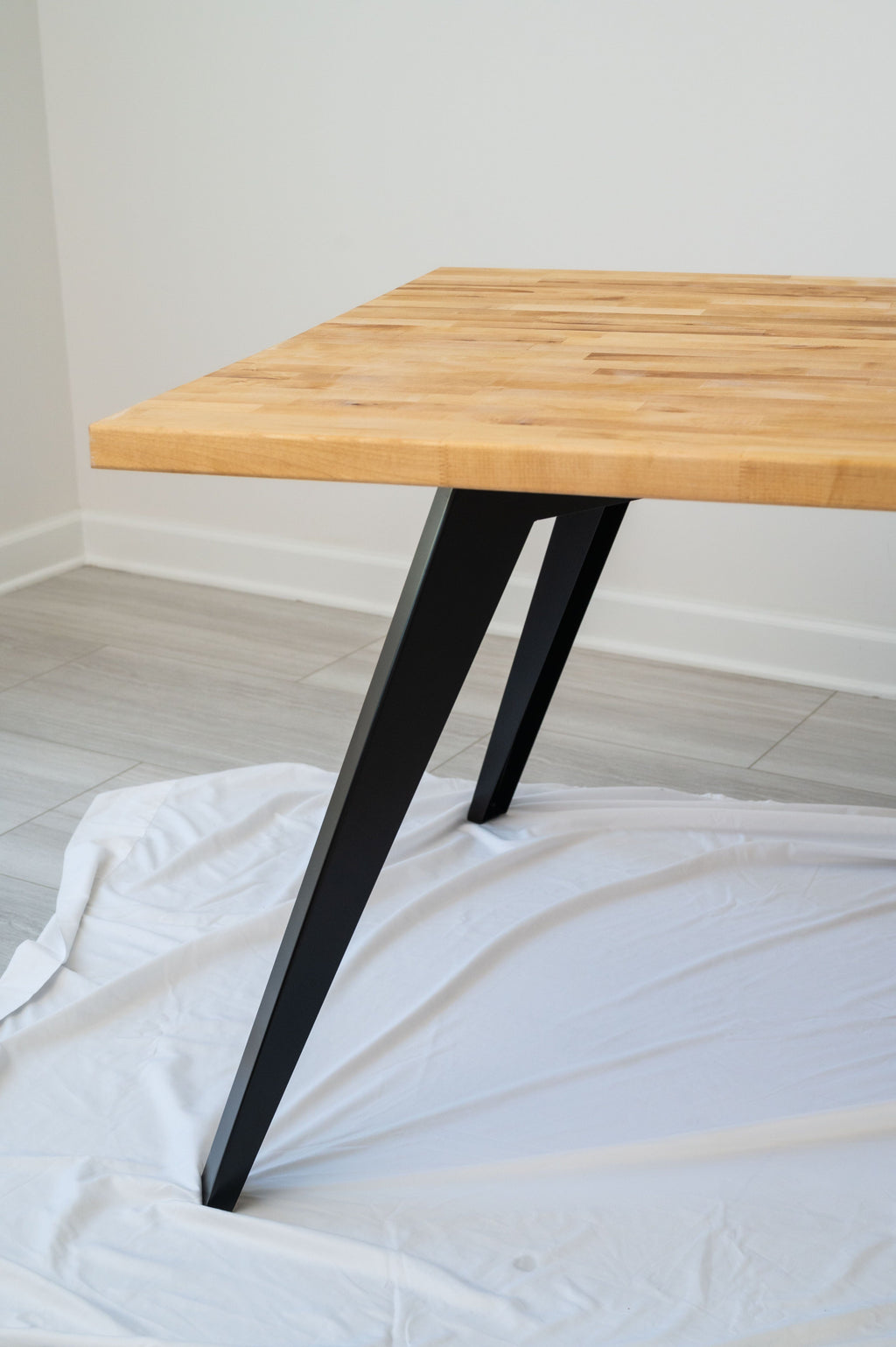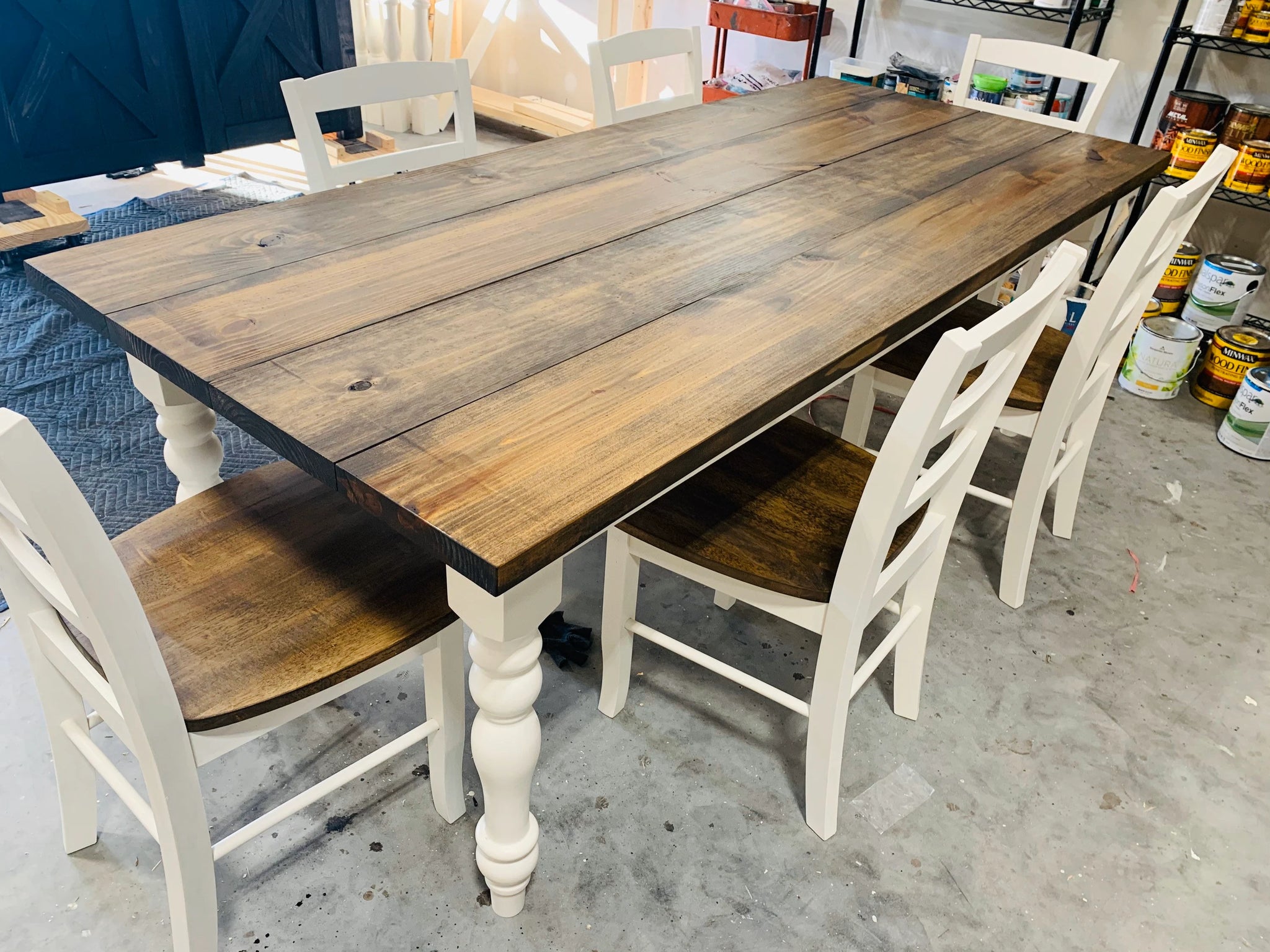Achieve a Sophisticated Look with Premium Dining Table Legs Wood Options
Achieve a Sophisticated Look with Premium Dining Table Legs Wood Options
Blog Article
Discovering the Various Sorts Of Eating Table Legs Timber for Your Eating Area
The option of dining table legs wood can profoundly affect both the aesthetic and useful top qualities of your dining area. Strong timber alternatives, such as oak and walnut, offer a classic look with unrivaled longevity, while engineered wood choices supply cutting-edge layouts that resemble the splendor of all-natural grains.
Strong Wood Options

Furthermore, strong timber is renowned for its toughness and long life. Unlike engineered materials, strong timber is less susceptible to bending and damage with time when properly preserved. This makes it a perfect selection for families or those who often hold events. Each piece of solid wood is distinct, showcasing individual characteristics that add to the appeal and character of the eating table.
In addition, strong timber can be finished in countless means, varying from natural oils to tarnished finishes, permitting house owners to individualize their furnishings to match their decor. In summary, picking solid timber for dining table legs not only makes certain structural integrity yet additionally boosts the visual appeal of the eating area, making it a worthwhile investment for any kind of home.
Engineered Timber Alternatives

Plywood, constructed from several layers of wood veneer, is particularly strong and secure, making it an excellent option for dining table legs. Its layered make-up enables it to endure adjustments in moisture and temperature better than standard solid timber. MDF, on the other hand, supplies a smooth surface area for paint or veneering, allowing developers to achieve a refined look while maintaining structural stability.
Particleboard, usually used in affordable choices, offers respectable strength and is lightweight, making it less complicated to take care of. Nevertheless, it might not be as resilient as plywood or MDF. It is crucial to think about the desired use and wanted aesthetic when selecting crafted wood choices. These products not just enhance the functionality of eating spaces however also permit greater layout adaptability, making sure that modern and typical styles can exist together harmoniously.
Reclaimed Timber Includes
Reclaimed timber offers a special mix of sustainability and character, making it a progressively prominent selection for eating table legs. Sourced from old barns, manufacturing facilities, and other frameworks, redeemed wood embodies a background that brand-new materials just can not reproduce. Each item brings its own tale, noted by distinctive blemishes, knots, and varying grain patterns, which add to a table's unique visual charm.
Along with its visual charm, redeemed wood is an eco-friendly alternative. By repurposing previously made use of materials, it decreases the demand for new lumber, therefore aiding to conserve forests and minimize waste. This lines up with a growing consumer preference for sustainable methods in furniture.
Moreover, reclaimed wood is often much more long lasting than recently collected wood as a result of its age. The natural drying procedure that reclaimed timber goes through lead to a denser and stronger product, making it less susceptible to warping and splitting. This enhances the longevity of dining tables, allowing them to hold up against the rigors of daily use.
Softwood vs. Hardwood
When picking eating table legs, recognizing the distinctions between softwood and hardwood is crucial for achieving both functional and visual objectives. They generally display an even more rustic look, making them ideal for country-style or casual eating spaces.
On the various other hand, woods, sourced from deciduous trees like oak, maple, and cherry, are renowned for their density, toughness, and sturdiness. The complex grain patterns and rich hues of hardwoods provide a advanced and ageless allure, making them perfect for official dining settings. While hardwoods have a tendency to check here be more expensive and larger, their resilience against wear and tear typically validates the investment.
Ultimately, the selection in between softwood and hardwood for dining table legs should straighten with your layout vision, use needs, and spending plan, guaranteeing that your eating room shows your individual design while continuing to be functional gradually.

Therapies and finishes
The visual appeal and durability of table legs can be substantially boosted with various surfaces and therapies. These procedures not just safeguard the timber from damages however likewise boost its appearance, permitting it to enhance varied interior styles.
One common therapy is staining, which permeates the timber and enhances Look At This its all-natural grain while adding shade. Stains give a rich, classy appearance, enabling homeowners to match their furniture with existing decor. On the other hand, clear coatings such as polyurethane or varnish develop a protective layer without altering the timber's initial hue, guaranteeing resilience against wear and tear.
In addition, natural oils, like tung or linseed oil, nourish the timber and use a subtle shine, all while being eco-friendly. These oils allow the surface area to take a breath, protecting against dampness accumulation and potential warping.
For those looking for a rustic beauty, weather-beaten or distressed finishes can be used to produce an aged appearance, including character to the piece. Inevitably, the option of coatings and therapies depends upon personal preference, desired appearances, and the details wood type, making it necessary to take into consideration these aspects when selecting eating table legs for your space.
Final Thought
To conclude, the choice of eating table leg products dramatically influences both the visual and useful elements of a dining area. Strong timbers, crafted choices, and reclaimed alternatives each deal distinctive advantages, providing to various preferences and requirements. Understanding the distinctions in between woods and softwoods, in addition to ideal surfaces and treatments, permits educated decision-making. Ultimately, the choice of wood kind ought to line up with preferred design, go to this site toughness, and environmental factors to consider, improving the overall eating experience.
The option of dining table legs wood can profoundly impact both the useful and visual top qualities of your eating area - Dining Table Legs Wood. Solid wood alternatives, such as oak and walnut, give a classic look with unrivaled sturdiness, while engineered timber choices offer innovative layouts that imitate the splendor of all-natural grains. Solid wood offers a classic top quality that can raise the general design of an eating area. Each piece of solid timber is special, showcasing private characteristics that include to the appeal and personality of the eating table
Moreover, recovered timber is commonly a lot more resilient than freshly gathered wood due to its age.
Report this page